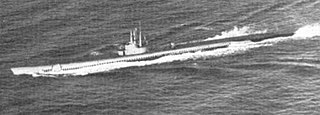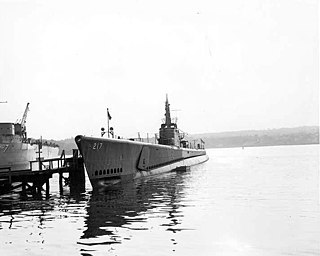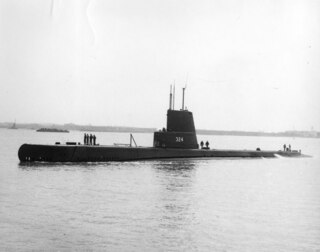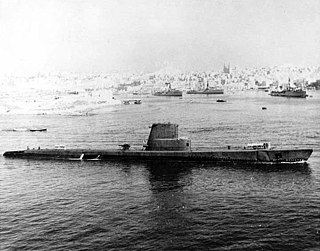
USS Runner (SS/AGSS-476), a Tench-class submarine, was the second ship of the United States Navy to be named for the runner, an amberfish inhabiting subtropical waters.

USS Kete (SS-369), a Balao-class submarine, was the only ship of the United States Navy to be named for the kete, the foureye butterflyfish Chaetodon capistratus. Her keel was laid down by Manitowoc Shipbuilding Company of Manitowoc, Wisconsin. She was launched on 9 April 1944 sponsored by Mrs. E. S. Hutchinson, and commissioned on 31 July.

USS Picuda (SS-382), a Balao-class submarine, was originally named Obispo, making her the only ship of the United States Navy to be named for the obispo, a spotted sting ray.

USS Guardfish (SS-217), a Gato-class submarine, was the first ship of the United States Navy to be named for the guardfish.

USS Mingo (SS-261) — a Gato-class submarine — was the first ship of the United States Navy to be named for the mingo snapper.

USS Peto (SS-265), a Gato-class submarine, was a ship of the United States Navy named for the peto, a sharp-nosed tropical fish of the mackerel family.

USS Pogy (SS-266), a Gato-class submarine, was the first ship of the United States Navy to be named for the pogy, or menhaden. She was credited with sinking 16 ships totaling 62,633 gross register tons during World War II.

USS Ray (SS/SSR-271), a Gato-class submarine, was the first ship of the United States Navy to be named for the ray, a fish characterized by a flat body, large pectoral fins, and a whiplike tail.

USS Blenny (SS/AGSS-324), a Balao-class submarine in commission from 1944 to 1969, was a ship of the United States Navy named for the blenny, a fish found along the rocky shores of the Atlantic Ocean. During World War II, Blenny conducted four war patrols in the Java Sea and South China Sea between 10 November 1944 and 14 August 1945. She sank eight Japanese vessels totaling 18,262 tons. In addition, she is credited with destroying more than 62 miscellaneous Japanese small craft by gunfire.

USS Brill (SS-330), a Balao-class submarine, was a ship of the United States Navy in commission from 1944 to 1947. She was named for the brill, a European flatfish.

USS Bumper (SS-333), a Balao-class submarine, was a ship of the United States Navy named for the bumper, a small fish of the North and South Atlantic Ocean.

USS Lizardfish (SS-373), a Balao-class submarine, was a boat of the United States Navy named for the lizardfish, a slender marine fish having a scaly, lizard-like head and large mouth.

USS Hardhead (SS-365), a Balao-class submarine, was a ship of the United States Navy named for the hardhead, a fish of the croaker family.

USS Hawkbill (SS-366), a Balao-class submarine, was the first ship of the United States Navy to be named for the hawksbill, a large sea turtle.

USS Hammerhead (SS-364), a Gato-class submarine, was the first ship of the United States Navy to be named for the hammerhead shark, a shark found in warm seas with a flattened anterior forward of the gill slits, presenting a hammer-like silhouette when viewed from above.

USS Icefish (SS-367), a Balao-class submarine, was a ship of the United States Navy named for the icefish, any member of the family Salangidae, small smeltlike fishes of China and Japan. These fish are also collectively known as whitebait.

USS Jallao (SS-368), a Balao-class submarine, was a ship of the United States Navy named for the jallao, a pearl-white haemulonid food fish of the Gulf of Mexico.

USS Lamprey (SS-372), a Balao-class submarine, was a ship of the United States Navy named for the lamprey, any of certain eel-like aquatic vertebrates.

USS Loggerhead (SS-374/AGSS-374), a Balao-class submarine, was a ship of the United States Navy named for the loggerhead, Caretta caretta, a very large, carnivorous sea turtle common in the warmer parts of the Atlantic, Pacific, and Indian Oceans.

USS Mapiro (SS-376), a Balao-class submarine, was a ship of the United States Navy named for the mapiro, a fish of the Gobioidea suborder occurring off the West Indies and the Atlantic coasts of Central America and Mexico.



















